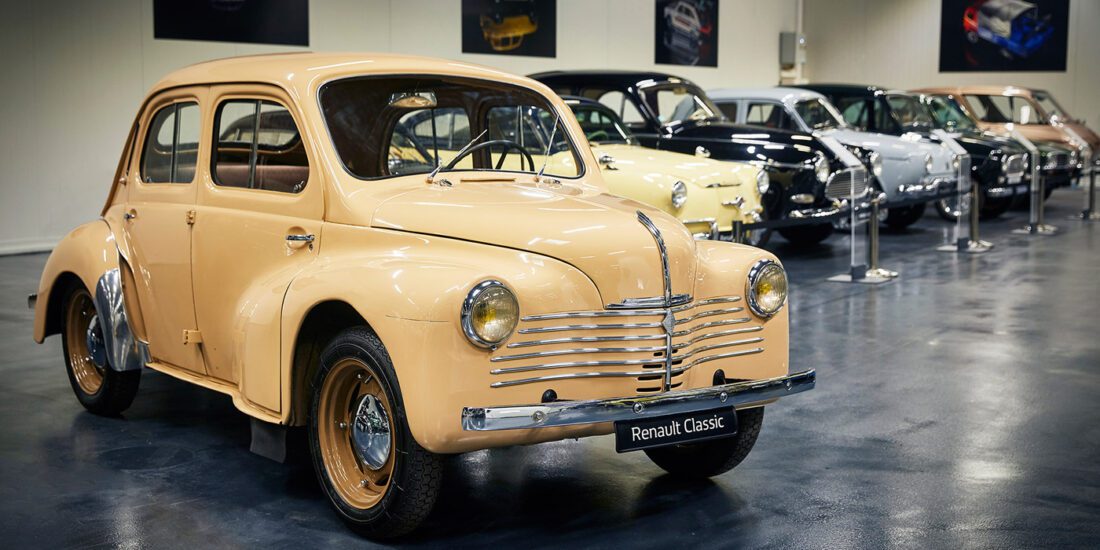
Test drive the rarest Renault
Renault in Russia is associated primarily with Logans and Dusters. But the French company used to make big luxury cars.
The most difficult thing is to tuck a long hood topped with a five-pointed star into a turn. The five-meter car can barely fit on French country lanes, but 85 years ago, when the black-and-green Renault Vivastella was launched, all roads were like that or worse. Although oncoming cars were rare and certainly would not have to disperse in a turn with a concrete mixer.
The Renault brand is strongly associated with Logans and Dusters, at most with nimble European hatchbacks and compact vans. But the French company used to make big luxury cars. For example, a 40CV with a 9-liter inline engine and weighing under three tons - these were used by French presidents in the 1920s.
Renault also had inexpensive hardy cars - they were actively bought by taxi companies, not only in Paris, but even in London. The Marne episode, when taxis transported Allied troops and thereby saved Paris, made the cars with unusual sloping hoods famous. By the age of 120, Renault had amassed an impressive collection of cars and some of them can be driven around in honor of the anniversary.
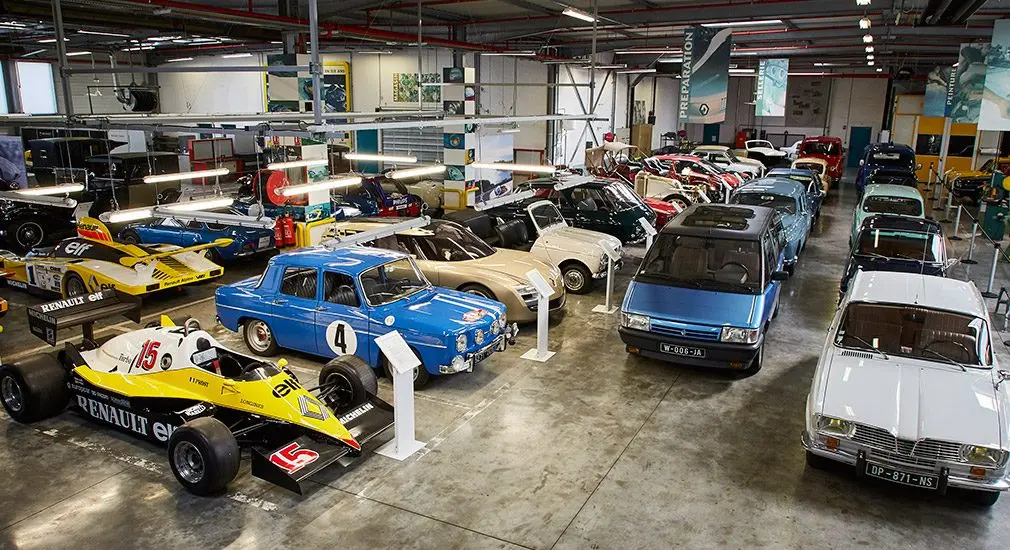
Characteristic noses, as if human in shape, were a hallmark of Renault for a long time: the radiator of cars was located behind the engine until the early 1930s. The nose of Vivastella is like everyone else's, and the radiator grill is crowned with a five-pointed star instead of the familiar rhombus - to the envy of any Soviet car. Stella was present in the name of the cars of this luxury family. It was actually a luxury brand like Infiniti, and Vivastella is not the most expensive model in the lineup, above it were Reinastella and Nervastella with inline eights.
You sit on the back row almost without bending down, with a wide footboard. There is so much space that even folding strap-on chairs for two more servants could fit. The interior, according to the notions of luxury of that time, is upholstered with woolen cloth and looks modest.
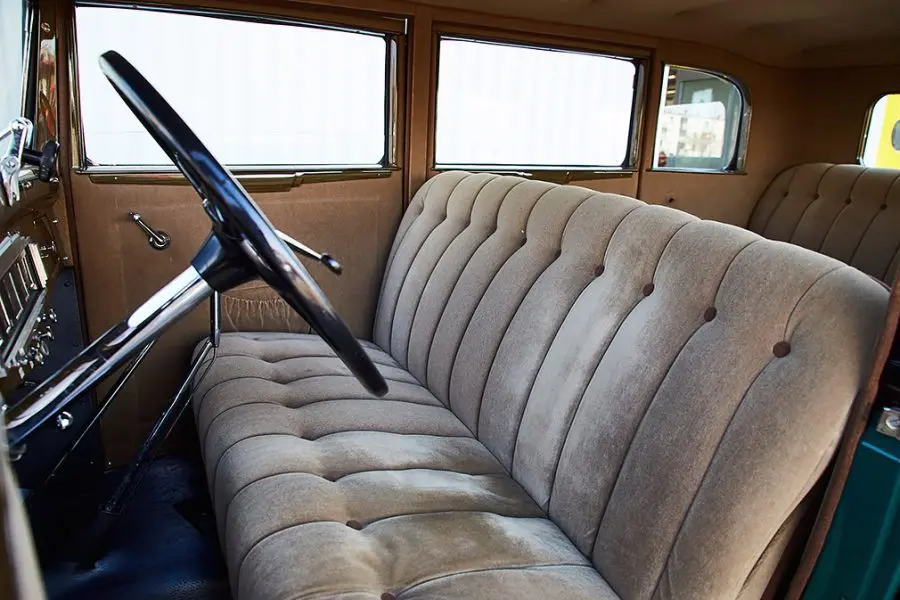
The rear windows are made lowering - this is a kind of climate control. For interior ventilation, you can also raise the air duct above the hood and open the windshield. In winter, the engine becomes the only source of heat, and the woolen cloth provides protection from the cold. No heating and other benefits of civilization.
People of that time, apparently, were stronger and, in addition to resistance to cold, could boast of an astronaut's vestibular apparatus. Otherwise, they would not have survived for a long time on a plump sofa, placed directly above the rear axle. Its springs, along with long suspension springs, rock so that I soon moved to a folding chair, and then asked to drive.
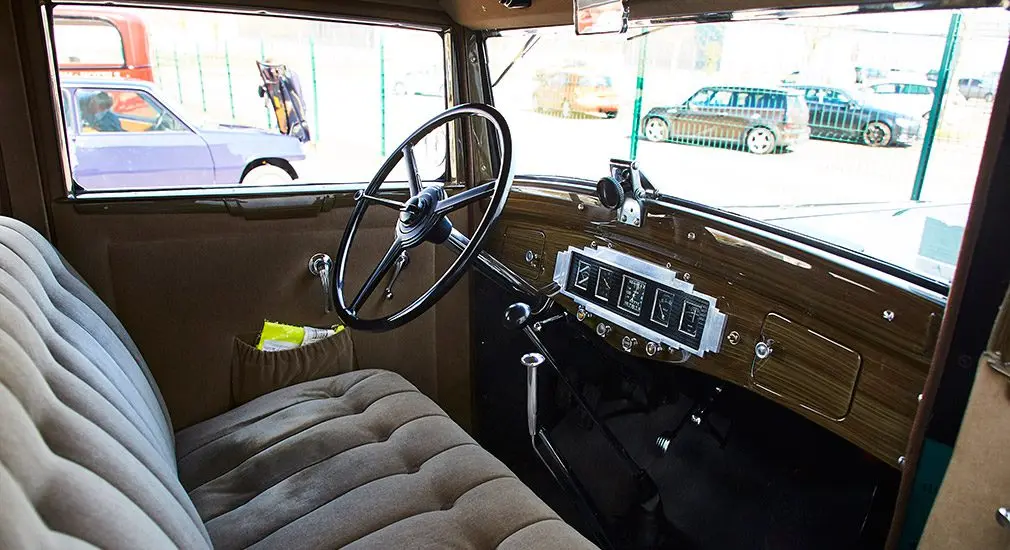
The front sofa is set too far away and is not regulated in any way - you sit hunched over. The long clutch pedal won't run out, and there are almost no brakes, so it's best to slow the car using the terrain. And keep a serious distance, just in case. There are no turn signals on this car, so you have to indicate your intentions with your hand from the window.
The steering wheel, by the way, is installed on the left, which was then a rarity. Historian Jean-Louis Loubet, who became our guide to Renault history for several fascinating hours, said that in those days the French preferred to drive on the right side with a right-hand drive. Firstly, because the driver did not have to go around the car to open the door to passengers - and that was one of his duties. Secondly, it was easier to see the side of the road - the interwar French roads did not differ in special quality and width. Driving huge 5-meter cars on them was still an adventure. And the built-in jacks hint that the wheels were often pierced in those days.
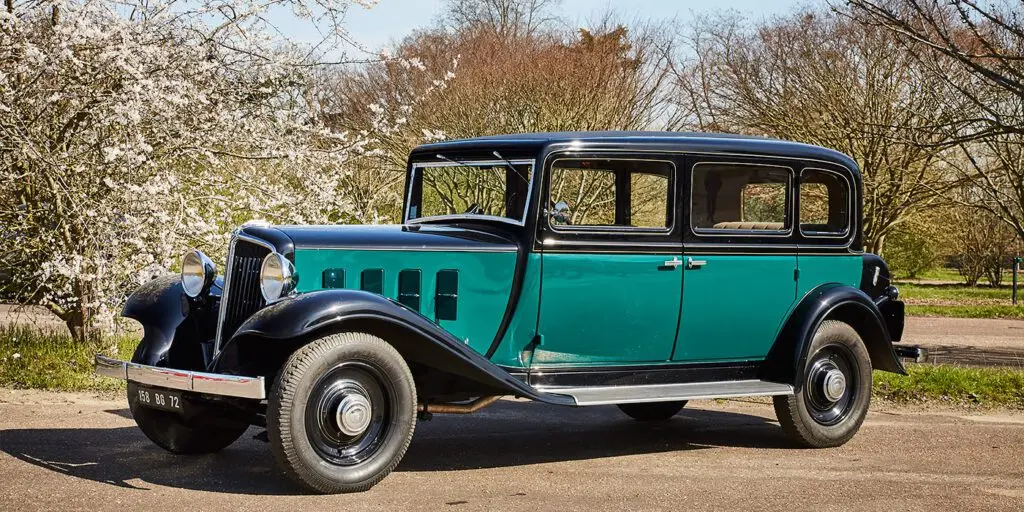
"Hrrust!" - this turns on the unsynchronized first. There are only three gears and in the last one you can go all the way and even overcome low climbs. The 3,2L engine should be more than enough for a 1,6 ton car, and the Vivastella can accelerate to 110 km / h. In reality, the speed is half as much, not only because of the brakes: it is harmful for a fossil motor to keep high revs for a long time.
Backlash of the steering wheel, impressive moves of the lever and pedals - no one really thought about the convenience and comfort of a hired person. The chauffeur was not only a sign of wealth, he also acted as an intermediary between a difficult-to-drive car and an unaccustomed owner. The rain should not be terrible for such a person, therefore in the luxurious Nervastella the chauffeur sits in the open air, and the passenger in a closed cabin equipped with a mechanical wall calendar and a communication tube.
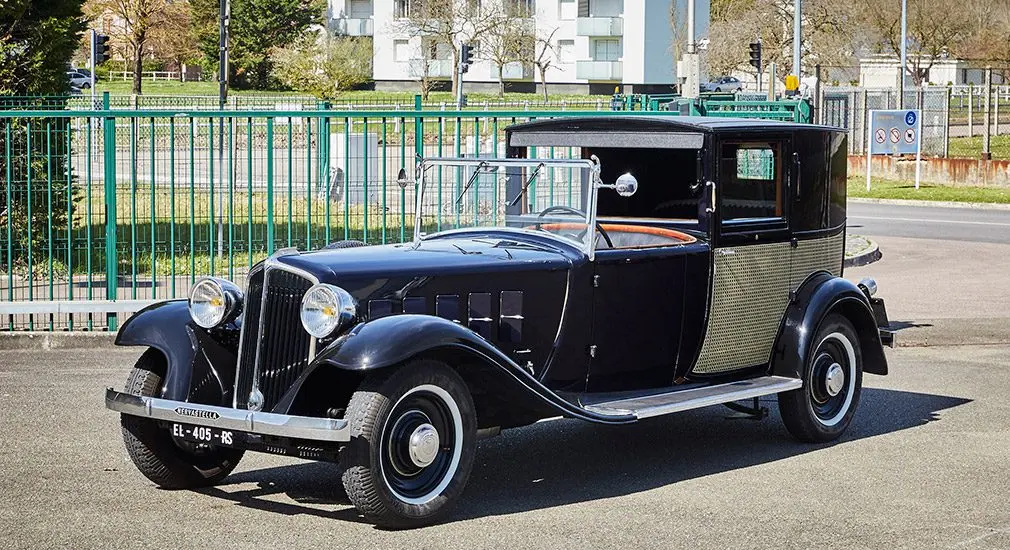
In his first car, Louis Renault, who looked like a mustache and bowler hat to Charlie Chaplin, barely fit. The first Renault with a closed body generally resembled a wardrobe on wheels. Having become a famous automaker, the designer was not eager to produce small cars.
The mass low-cost model for the post-war period was an initiative of the company's engineers led by CTO Fernand Picard. This story is presented as a feat - France was occupied, and the Germans ruled the Renault plant. At the same time, the car turned out to be suspiciously similar to the VW Beetle and was also rear-engined. According to rumors, Ferdinand Porsche was involved in the final revision, who was sent to a French prison after the war.
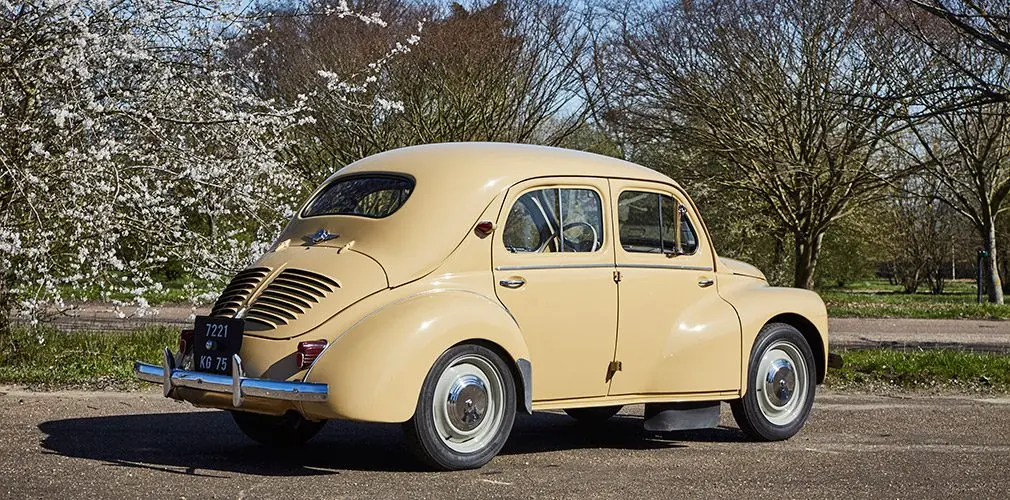
Louis Renault also went to jail on charges of collaboration - in custody, he died under unexplained circumstances. The production of the new 4CV model started already at the nationalized enterprise.
The new Renault 4CV went on sale in 1947 and soon became the most popular model in France. The front of the car was decorated with a fake radiator grille to reduce the resemblance to the "Beetle". For the sake of convenience, the body was made four-door. The gear lever is the size of the steering column switch of a modern car, round checker pedals, thin body struts. The car is so small it looks like a toy. Later, in the museum, I saw a cut-up 4CV engine and gearbox - miniature pistons, gears.
At the same time, you don't have to practice yoga to get inside through the wide swing door. If you wish, you can try to squeeze four adults into the cabin - there is unexpectedly a lot of rear seat, naturally, for a car with a length of only 3,6 meters. From an engine with a volume of only 0,7 liters and a power of 26 hp. You don't expect surprises, but it pulls cheerfully - the 4CV weighs only 600 kg. The main thing is to add gas at the start. He rides faster and more willingly than the majestic Vivastella. It is controlled recklessly - the steering wheel is short and, despite the engine at the rear, it is quite stable in turns. But the first gear is still out of sync and only starts on the spot.
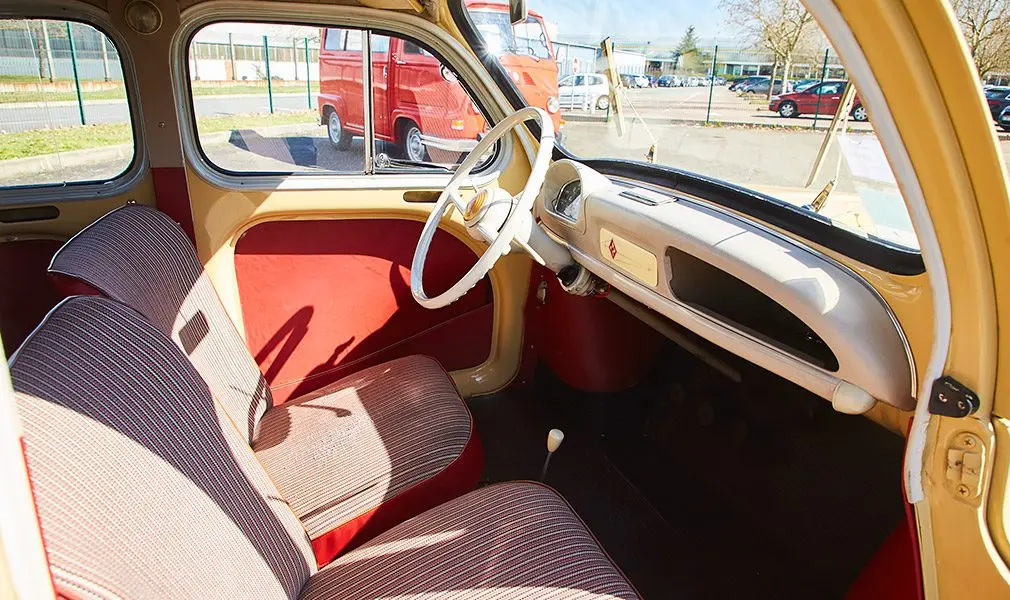
Renault 4CV is Pierre Richard's ideal car and is as naive and funny as comedies with his participation. Following the success of this model, the company focused on small, cheap and economical models. The Renault 4 "car-jeans" entered the market in 1961. Renault designers designed a model for men and women, urban and rural, for leisure and work.
The car is sturdy and timeless. The roomy body resembles a station wagon and a van at the same time, protective linings and a headroom under the bottom make the "four" look like a crossover. The torsion bar suspension was not afraid of bad roads and made it possible to increase the ground clearance if desired. Two people with the help of special handles could pull a light car out of the mud. The huge tailgate and the closed stern hint that you can not be afraid to load this car under the roof. The hood, which folds back together with the fenders, makes repairs a lot easier.
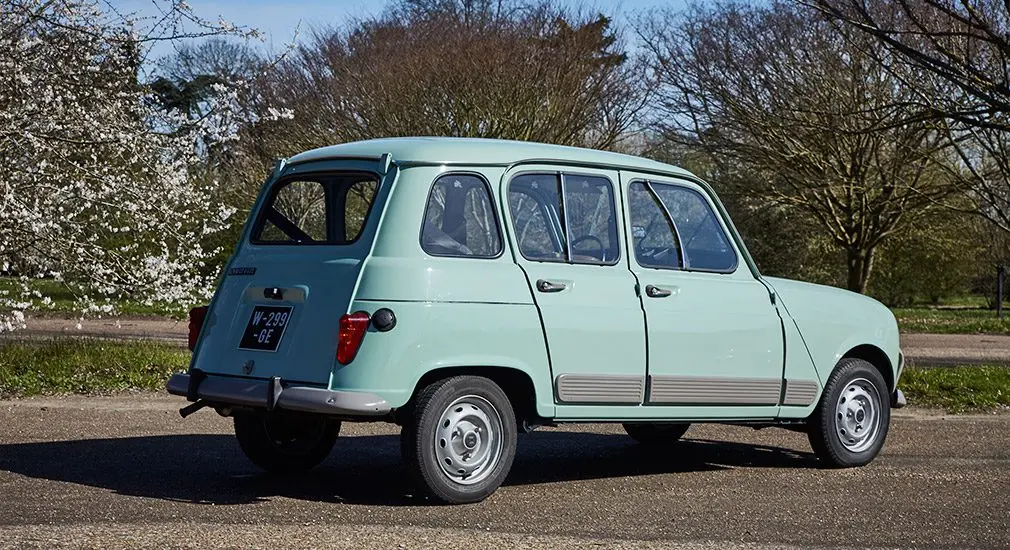
The driver's seat looks like a folding chair, the side windows are sliding. Inside, the Renault 4 is as handsome as jeans turned inside out - the rough welds and power structure are barely covered. At the same time, this openwork construction has a place for aesthetics, and the ceiling panel, stamped from something cheap, is lined with a stylish diamond pattern.
The cars of the first years of production were equipped with the same motors from 4CV, but already in the front. Louis Renault hardly approved of front-axle drive - it was the legacy of his arch rival Citroen. At the same time, this layout gave the small car a roomy flat-floor body and a comfortable trunk.
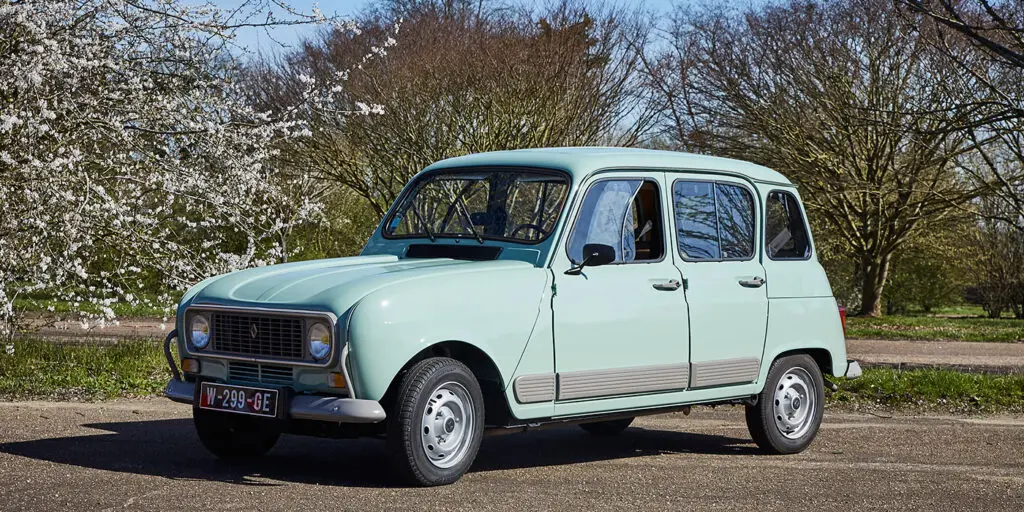
A poker sticks out of the front panel, shifting gears - such as were used on the pre-war "Vivastellas". Forward is the first, backward is the second, right and forward is the third. There is in this process something of reloading weapons. Production of Renault 4 continued until the beginning of the 1990s, and on a particular car produced in 1980 there is a more powerful 1,1 liter engine with 34 hp, with which speeds of 89-90 km / h are quite achievable. But driving quickly is uncomfortable: in corners, the car rolls dangerously and, with the last of its strength, clings to the asphalt with thin tires. The front wheel goes inside the arch, and the rear wheel strives to get off the ground.
Renault 4 sold 8 million units. For Europe, it was a "car-jeans", for the countries of Africa, Latin America and Eastern Europe - a "car-Kalashnikov", because it is simple and unpretentious.
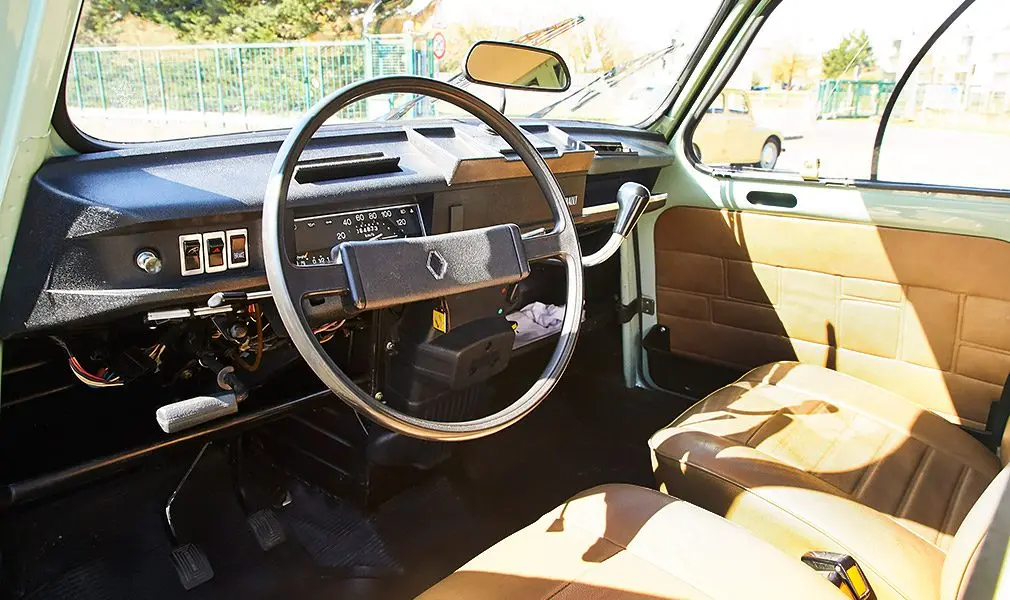
At the same time, in 1972, a more urban version was developed on the same units - Renault 5 with wide composite bumpers that are not afraid of contact parking. Internal door handles with recesses in the body, square headlights - this is the same "Oka", only with French charm. That there is a feed with a strong slope of the C-pillar and vertical headlights. Or the front panel of Darth Vader's ribbed hide and his life support system instead of the dashboard.
Gears are shifted by a floor lever, the handbrake is also of the usual type. If Renault's "cargo" suspension shook, then this car rides much softer. And quite smartly, despite the engine with a volume of less than a liter. You can't even say that the 1977 "Five" is a museum piece.
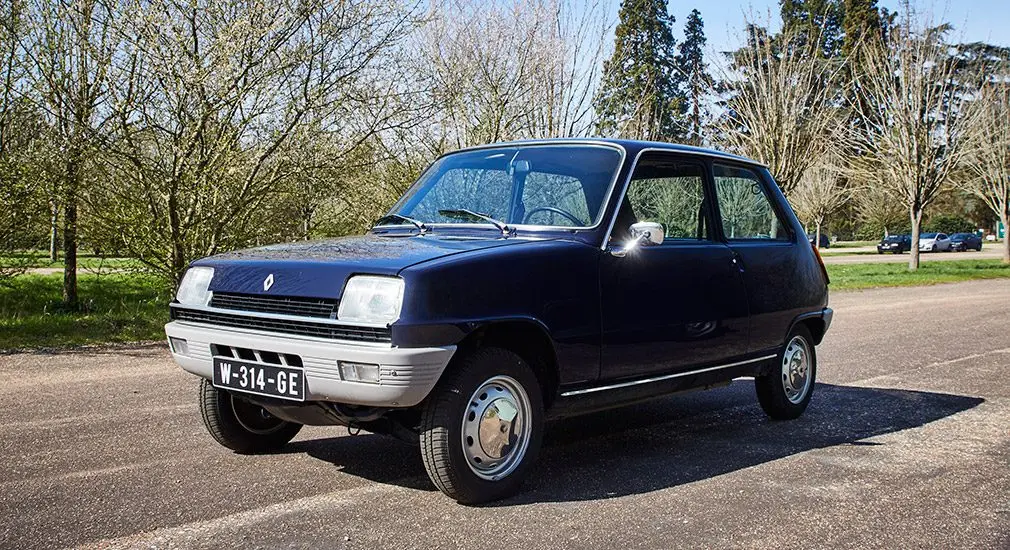
Renault 16 was released even earlier, in 1966, but it drives just like a modern car. Engine of 1,4 liters and 54 hp. unexpectedly frisky and finally allows you to accelerate over 100 km / h. Any modern crossover will envy the soft suspension. Is that the gear shifting on the steering column is unusual. Even the famous radio host Alexander Pikulenko, who drove this car when he was a tester at AZLK, did not immediately adapt.
The Renault 16 was in many ways a landmark car. This is the company's first large car in many years - 4,2 meters in length. He won the title of European Car of the Year in 1965 and in fact became the pioneer of hatchback fashion. This is not surprising - the R16 is very beautiful: a spectacular slope of the C-pillar, a front panel with bricks upholstery, narrow instrument slots.
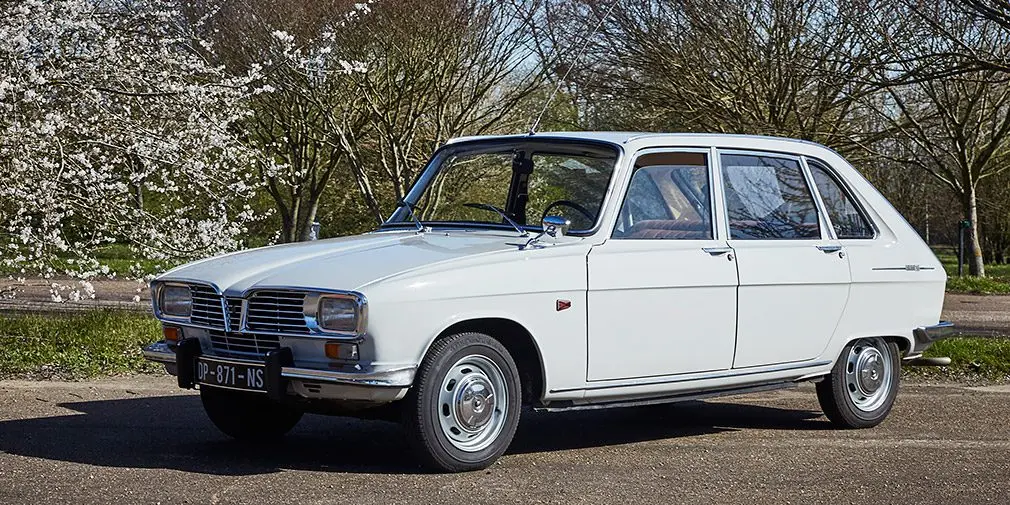
In the USSR, Renault 16 was considered as an alternative to the Fiat 124, the future Zhiguli. This story is confirmed by Alexander Pikulenko. As a result, the Kremlin chose a more familiar car. The "Frenchman" not only looked unusual, it was also unusually arranged: torsion bar suspension, front-wheel drive with a gearbox located in front of the engine. Izh-Kombi was created based on the design of Renault 16, but it's even a pity that the production of the original was not launched in the USSR. The history of our car industry would have taken a different path, but we would have driven other Renault now.
However, Renault is changing now. Logan is no longer as popular as before, apart from the ascetic "Duster", the stylish Kaptur appeared, and the large crossover Koleos became the flagship of the lineup. The company is preparing to show one more novelty at the Moscow Motor Show.
